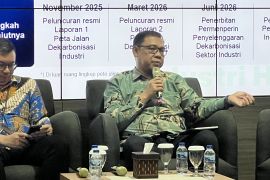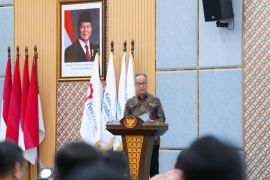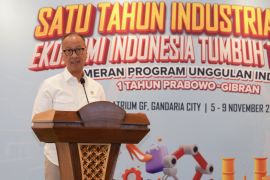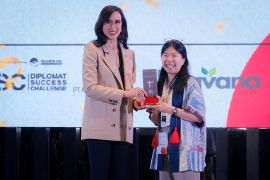Director General of Metal, Machinery, Transportation Equipment, and Electronics at the ministry, Setia Diarta, said the potential stems from Indonesia’s large population, which continues to offer strong market prospects.
“The automotive industry still has room to expand, given the significant potential of the domestic market,” he said at the Gaikindo Jakarta Auto Week in Tangerang, Banten, on Friday.
Vehicles in use data for 2024 from the International Organization of Motor Vehicle Manufacturers shows Indonesia’s car ownership ratio stands at 99 units per 1,000 people.
The figure remains far below Malaysia’s 490 per 1,000, Thailand’s 275 per 1,000, and Singapore’s 211 per 1,000.
Despite the relatively low ownership ratio, the automotive industry continues to be a key contributor to the manufacturing sector. In the third quarter of 2025, it accounted for 1.28 percent of the national GDP.
The subsector covers the four-wheel motor vehicle industry, which consists of 39 manufacturers with an annual production capacity of 2.39 million units, as well as the two- and three-wheel vehicle industry with 82 manufacturers and a production capacity of 11.2 million units per year.
From January to September 2025, four-wheel motor vehicle production reached 0.85 million units, with Completely Built-Up exports totaling 0.38 million units, representing around 45 percent of total output. For two- and three-wheel vehicles, production reached 5.25 million units with CBU exports of 0.41 million units.
The strong export share, particularly in the four-wheel segment, underscores Indonesia’s role as an important production base for global automakers despite rising competition from other producing countries.
To accelerate the development of low-emission vehicles, the Ministry of Industry is implementing the Low Carbon Emission Vehicle Program under Ministerial Regulation No. 36 of 2021.
So far, 15 companies have joined the program, producing energy-efficient vehicles, hybrids, plug-in hybrids, and battery electric vehicles, contributing additional investment amounting to 22.37 trillion rupiah.
The government is also speeding up the development of the electric vehicle ecosystem through strategic policies and incentives, including the Luxury Goods Sales Tax Borne by the Government for hybrid and electric vehicles.
“This step further reinforces our commitment to building a competitive, modern, and sustainable automotive industry,” Setia Diarta said.
Industry players believe tax incentives such as PPnBM or PPnDTP can boost vehicle sales, as seen during the COVID-19 period.
In 2020, vehicle sales were recorded at only 532,000 units with production at 690,000 units. After incentives were introduced in 2021, sales jumped to 887,000 units, and production increased to 1.12 million units.
Related news: Indonesia, Japan intensify cooperation in automotive sector
Related news: Low vehicle ownership presents opportunity for auto sector: minister
Related news: Automotive sector's contribution to national industry remains positive
Translator: Ahmad Muzdaffar Fauzan, Primayanti
Editor: Azis Kurmala
Copyright © ANTARA 2025












